Pizza, popcorn and jerky. Nope, it’s not a suggestion for tonight’s dinner, though it would make for an interesting combo! Together, they represent some of the hottest savory items in the healthy indulgences market. When considered as a unit, they speak to what gourmet shoppers are craving: high-end natural foods that are built for taste and are still part of a healthy diet.
Why Popped Is Tops
Popcorn has definitely moved from the movie theater to the pantry, and along with it, shoppers are ditching the artificial yellow color and fake butter for way better ingredients.
“Today, more people than ever are interested in good food. They care about where their food comes from, and they will not compromise on taste,” says Jean Arnold, founder of 479 Degrees Popcorn, San Francisco, CA. Popcorn fits the bill as the perfect package of taste, health and affordability.
The industry has seen a few—okay, a lot—of new popcorn brands. What does it take to stand out from the crowd? In the popcorn category, having attributes like being non-GMO and gluten-free may help natural-oriented shoppers pick one brand over another.
And, for natural shoppers that also lean foodie, great taste and interesting new flavors are up there on the priority list. “For any retailer that’s looking for a new snack line, it’s got to taste amazing,” states Joe Driscoll, senior vice president of marketing at Angie’s Artisan Treats.
Arnold says her company’s artisan popcorn is “kettle cooked in small batches and seasoned with spices and ingredients that are blended in small batches.” This personal touch, the company believes, adds to the taste. “Each of our ingredients is selected for flavor, and we use only the highest quality culinary ingredients,” she states.
Speaking of taste, Arnold says the popcorn category is seeing a move to some pretty innovative flavors  that were inspired by trends in the broader food category. “In the past year, we have seen seaweed become a major flavor cue, as well as a focus on elevating conventional flavors,” says Arnold. An example of the latter is instead of the standard cheddar popcorn flavor, her company offers Asiago, Parmesan + Cheddar, “which features a cave-aged cheese from a small artisan cheese purveyor in Oregon.”
that were inspired by trends in the broader food category. “In the past year, we have seen seaweed become a major flavor cue, as well as a focus on elevating conventional flavors,” says Arnold. An example of the latter is instead of the standard cheddar popcorn flavor, her company offers Asiago, Parmesan + Cheddar, “which features a cave-aged cheese from a small artisan cheese purveyor in Oregon.”
Driscoll calls cheese “a big, growing category in popcorn,” noting that his company ups the ante with white cheddar and a cheddar–caramel mix in its Boomchickapop line. He adds that shoppers are often drawn to counterbalances like sweet and spicy popcorn with cumin and paprika.
Also affecting flavor trends are Millennials, who are not afraid to reach for Thai, Indian, Korean and other ethnic foods and are looking for similar flavors in their snacks. “They are the most ethnically diverse generation; and they have grown-up in an increasingly global society. They are looking for interesting flavor combinations. They are no longer satisfied with simple flavors like ‘sea salt’ or ‘BBQ,’” states Arnold.
Martin Neumann, vice president of sales and marketing for Gaslamp Popcorn, San Diego, CA, says his company plans to launch seasonal flavors, some with unique spins like Mango Habanero Salsa popcorn and Sweet Fiesta Lime flavor popcorn for summer. “That way, people have options,” he states.
While Driscoll says that popcorn has something for everyone, whether you have a sweet, salty or savory tooth, he adds that stores should not forget about core flavors though, like kettle corn and sea salt. “Sea salt is still a major player. People still want just good salty, almost buttery popcorn,” says Driscoll.
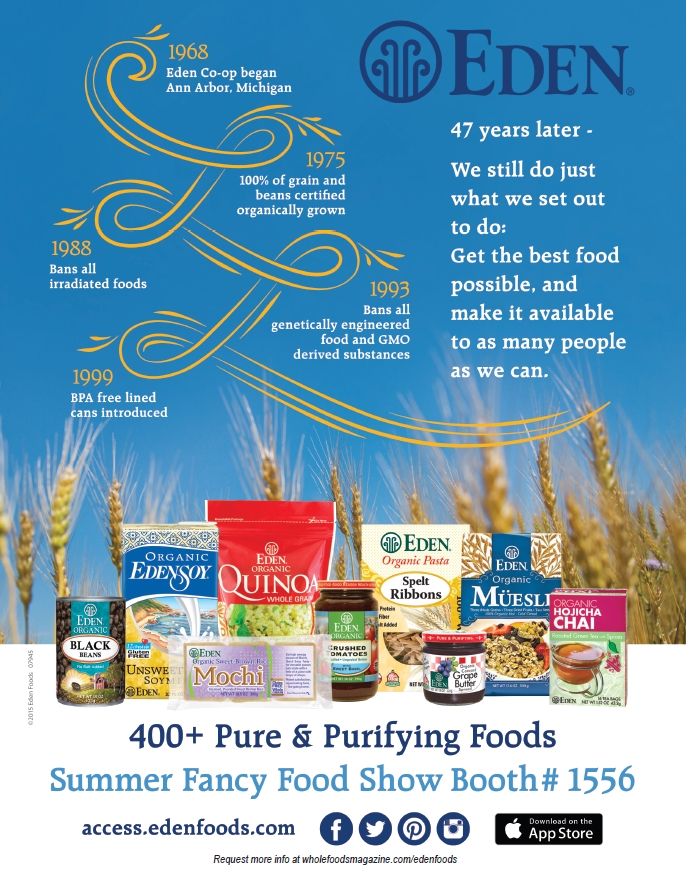 No matter what flavors pop up in this category, Driscoll says simpler recipes often end up on top. He states, “Shoppers want to trust and believe in all the credentials of a natural company from a simpler ingredients standpoint…a lot of people expect that.”
No matter what flavors pop up in this category, Driscoll says simpler recipes often end up on top. He states, “Shoppers want to trust and believe in all the credentials of a natural company from a simpler ingredients standpoint…a lot of people expect that.”
Now while artisan popcorn makers are busy thinking about flavors, there are two more important items to consider. First is the kernel itself, and expert poppers have a lot of options on the table. “Popcorn is like snowflakes; no two are alike. And, that’s part of what we love it about it,” says Driscoll. “Each has a different look, shape and texture.” His company wants kernels to have the right mix of fluffiness and crunch.
Neumann explains that there are two overarching categories of popping corn: butterfly (which puffs out and separates when popped) and mushroom (which mushrooms up when popped). His company uses butterfly for kettlecorn for optimal adhesion of the sugar and salt, for instance, and tests several brands to find the best taste and texture.
Butterfly popcorn is also popular at Quinn Popcorn, Boulder, CO, which sources its popcorn from Nebraska. Says Kristy Lewis, cofounder and CEO, “There’s a lot that goes into the quality of popcorn. It’s butterfly yellow popcorn with the perfect crunch! That crunch is the result of the corn’s expansion ratio, which is dependent on growing conditions. It’s complex and always changing, but we get the cream of the crop.”
Arnold says her company tends to choose kernels that have a good mouth feel, hulls that fall off during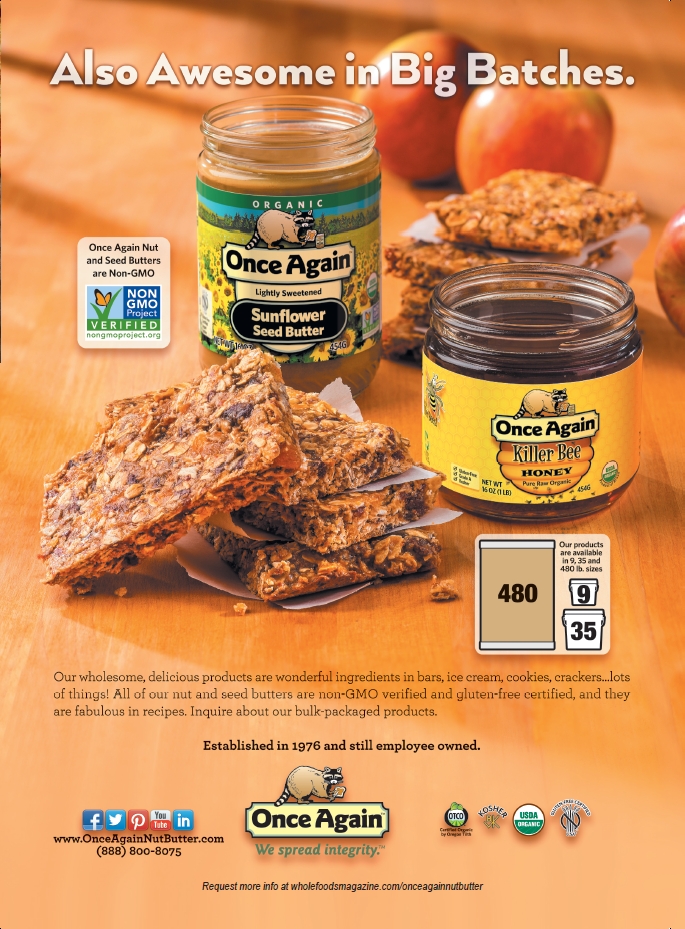 popping, a “corny, nutty” taste and are sustainably farmed. “Unlike most of our competitors who simply use popcorn as a carrier of seasonings, we look for a seed that imparts that delicious, nutty popcorn flavor,” she states, adding that this is a big distinguishing factor over traditional brands. “Much of the conventional popcorn seeds have been bred on purpose so they don’t interfere with lab-made flavoring like ‘butter flavor.’”
popping, a “corny, nutty” taste and are sustainably farmed. “Unlike most of our competitors who simply use popcorn as a carrier of seasonings, we look for a seed that imparts that delicious, nutty popcorn flavor,” she states, adding that this is a big distinguishing factor over traditional brands. “Much of the conventional popcorn seeds have been bred on purpose so they don’t interfere with lab-made flavoring like ‘butter flavor.’”
And then there’s the health factor to consider. “Popcorn is full of wonderful attributes,” says Neumann. “It’s naturally gluten-free and full of antioxidants, fiber and more.” Many artisan companies do not want to cover this up with unhealthy processing techniques.
For instance, some companies choose air popped. Says Arnold, “The result is popcorn that is light, fluffy and perfect in crunch, and it happens to be better-for-you (i.e., lower fat and calories).”
Other firms prefer popping in healthy oils. Speaking of his company’s Boomchickapop sea salt popcorn, Driscoll states, “The sunflower oil gives it a little extra note. You can have the flavor without the butter.”
Neumann’s company makes a sea salt and olive oil variety. “It’s made with California Olive Ranch extra-virgin olive oil,” he explains, noting that it was selected partly for its nutrition content.
Lewis also uses California Olive Ranch olive oil in some varieties as well as other healthy oils in others like organic coconut oil. Her company recently launched a unique healthy variety of Kale & Sea Salt popcorn, made with organic kale, organic carrot, garlic and onion. “We focus on healthy flavors that you feel good about eating and feeding to your family,” she states.
Eating in on Pizza Night
Gooey, crunchy, flavorful and delicious. What’s not to like about pizza? “Approximately 90% of Americans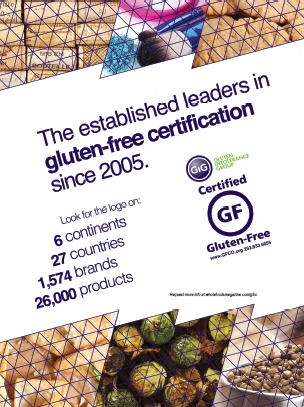 eat at least one pizza per month, easily making pizza the number one dinner choice in the United States,” according to Chip Milam, founder of Doc’s Nutrilicious, Oh YES! Foods, Los Angeles, CA.
eat at least one pizza per month, easily making pizza the number one dinner choice in the United States,” according to Chip Milam, founder of Doc’s Nutrilicious, Oh YES! Foods, Los Angeles, CA.
Some shoppers may still love their neighborhood pizzeria, but others are saying ti amo to frozen and prepare-at-home varieties. Frozen pizza has come a long way from its days of bland sauce and cardboard crust.
“For us, it’s about gourmet pizzas that indulge the consumer’s desire to savor the flavor and do what’s right nutritionally too—for themselves and their family,” states Amy Lotker, owner and executive vice president of marketing and sales at Better 4 You Foods LLC, Delray Beach, FL.
One great example of how artisan frozen pizza makers are truly elevating the category with taste and health in mind are varieties that cater to those on special diets—including those that want a great-tasting, lower carb pizza. “The growing demand for lower calorie, lower carbohydrate and gluten-free foods has drawn consumers to our brand,” says Mordy Dicker, vice president of marketing, Kayko Foods (maker of Absolutely Gluten Free Pizza), Bayonne, NJ.
The company makes a gluten-free pizza with a cauliflower crust that is lower in calories and carbohydrates than other pizzas. Some varieties use dairy-free cheese. “We also offer the added nutritional benefit of valuable antioxidants from cauliflower,” says Dicker.
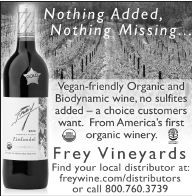 Companies keeping the “health” in gourmet pizza are offering lots of veggies and healthy grains. Lotker says her company uses a hearty crust that is packed with vitamins, nutrients and antioxidants, while having a lower glycemic index than traditional options. The secret ingredients? Says Lotker, “Sprouted grains and ‘ancient grains’ give consumers a crust that has more of a nuanced flavor profile.” The company also offers gluten-free and vegan varieties made with great taste in mind. She states, “It was our own family and friends who initially inspired us to create healthier, more flavorful gluten-free pizzas than what’s traditionally been available.”
Companies keeping the “health” in gourmet pizza are offering lots of veggies and healthy grains. Lotker says her company uses a hearty crust that is packed with vitamins, nutrients and antioxidants, while having a lower glycemic index than traditional options. The secret ingredients? Says Lotker, “Sprouted grains and ‘ancient grains’ give consumers a crust that has more of a nuanced flavor profile.” The company also offers gluten-free and vegan varieties made with great taste in mind. She states, “It was our own family and friends who initially inspired us to create healthier, more flavorful gluten-free pizzas than what’s traditionally been available.”
Oh YES! Pizza also differentiates itself with healthy grains and a huge amount of produce, all while being gluten-free, dairy-free and non-GMO. “Oh YES! Foods was specifically designed to be different,” states Milam, which he says is critical because freezer space is limited and no one wants to pick up another “me, too” product. He states, “Our pizzas are unique because we use quinoa plus 13 different fruits and vegetables, over five cups in our 10-inch pizzas and three cups in our personal 7.5-inch pizzas.” Fruits and veggies are worked into the sauce, the crust and the toppings.
And when companies incorporate meat toppings, many are using higher-end healthier products like uncured pepperoni and other preservative-, nitrate- and nitrite-free meats, says Lotker.
Or, vegan “meat” is used. “The other big trend has been in vegan foods and meat substitutes...I top our vegan pizza with a chicken substitute and add BBQ sauce and it is delicious,” Milam states.
Chew on This
If you associate beef jerky more with convenience stores than with gourmet grocers, it’s time to do some re-evaluating. Jerky has gone through a bit of a revolution and now has a solid place in the healthy indulgences section with some newer options on the market. “Artisanal jerky is having its heyday,” states Matt Tolnick, CEO of Lawless Jerky, Santa Monica, CA. “As an industry, beef jerky is about 15 years behind craft beer and you’re starting to see more companies challenging the mainstay brands that own the majority of market share.”
The snack may appeal to those on the paleo or a low-carb diet, those want to bump up their protein intake, or consumers that just love the taste and chew. Makes sense. But, does it surprise you that just as many women as men eat jerky? According to KaiYen Mai, founder and CEO of Fusion Jerky, South San Francisco, CA, “Half of the jerky eaters are women, yet we’re the only one that speaks to them.” The company reaches out to women with its packaging and in other ways.
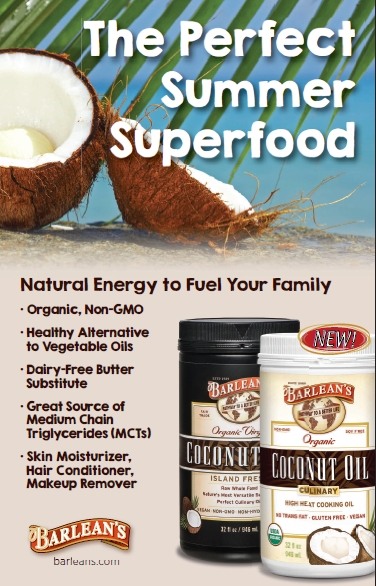 Flavor, meat source and cooking technique are all part of how brands are differentiating themselves. Asian flavors are among the many shoppers are craving. “Our flavor combinations are unique and fun,” Mai states. “Our baked jerky fuses traditional Asian-style cooking with innovative American flavors, allowing the texture of our jerky to be moist, soft and tender.” She says she experimented with 40 different flavors before settling on eight, going for the freshest and tastiest varieties with combinations like Chipotle Lime, Chili Basil and Garlic Jalapeno.
Flavor, meat source and cooking technique are all part of how brands are differentiating themselves. Asian flavors are among the many shoppers are craving. “Our flavor combinations are unique and fun,” Mai states. “Our baked jerky fuses traditional Asian-style cooking with innovative American flavors, allowing the texture of our jerky to be moist, soft and tender.” She says she experimented with 40 different flavors before settling on eight, going for the freshest and tastiest varieties with combinations like Chipotle Lime, Chili Basil and Garlic Jalapeno.
Tolnick agrees that international is in. He states, “In addition to taking my inspiration for spice use from my travels and the international cuisine I’ve enjoyed along the way, I like to identify herbs and spices that have antioxidant and anticancer properties and which have been used throughout recorded history by ancient cultures for medicinal, culinary and even sometimes religious purposes.”
Unique spices are trending, but classic flavors also are going steady. Jason Burke, chief hunter-gatherer at the New Primal, Charleston, SC, says sweet and heat is “always a winner…think Ghost Pepper & Honey.”
Ensuring jerky remains as healthy as possible is often a mission for gourmet jerky makers. “If a company can use higher integrity ingredients, while being authentic and transparent, they have a winning combination,” Burke states. Many firms are limiting the salt and sugar, and bumping up the herbs and spices.
 “Healthier” also means re-evaluating the meat sources. Gone are the days of mainly low-quality beef offerings. New Primal was a pioneer in launching 100% Grass-Fed Beef Jerky, and Fusion was one of the first to use chicken. You will also find jerky made with turkey, pork, bison and even vegetarian sources like seitan (Primal Spirit Foods), soy protein (Louisville Vegan Jerky) or coconut (CocoBurg). Many brands also are free of preservatives, nitrites and gluten.
“Healthier” also means re-evaluating the meat sources. Gone are the days of mainly low-quality beef offerings. New Primal was a pioneer in launching 100% Grass-Fed Beef Jerky, and Fusion was one of the first to use chicken. You will also find jerky made with turkey, pork, bison and even vegetarian sources like seitan (Primal Spirit Foods), soy protein (Louisville Vegan Jerky) or coconut (CocoBurg). Many brands also are free of preservatives, nitrites and gluten.
And beyond the source, the cut is key. “For jerky, a lean cut of meat is necessary since fat doesn’t dry out well,” says Burke. “We only use whole muscle cuts from the top-round of the cow for our beef jerky products since it tends to be the leanest cut possible making it the most ideal for jerky making.”
Shoppers still connecting jerky and convenience stores may be very interested to hear about all the quality that is built into gourmet brands. “Fusion Jerky is vertically integrated,” states Mai. “We make our jerky in our own state-of-the-art USDA facility in Nebraska, which allows us to have full control over all production procedures.” In addition, animals are U.S. raised, and the jerky is made here in the United States.
Likewise, Burke says his company “takes great pride in our animal sourcing,” and uses humanely raised, free-range animals that are 100% grass fed and not given hormones or antibiotics.
Tolnick is of a similar mindset. “Meat for our jerky has to be lean and has to live its whole life on pastures, consuming only grass and its mother’s milk, just as nature intended it,” he states. He adds that the nutritional profile includes a good omega fatty acid ratio and more heart healthy CLAs. WF
Published in WholeFoods Magazine, June 2015










